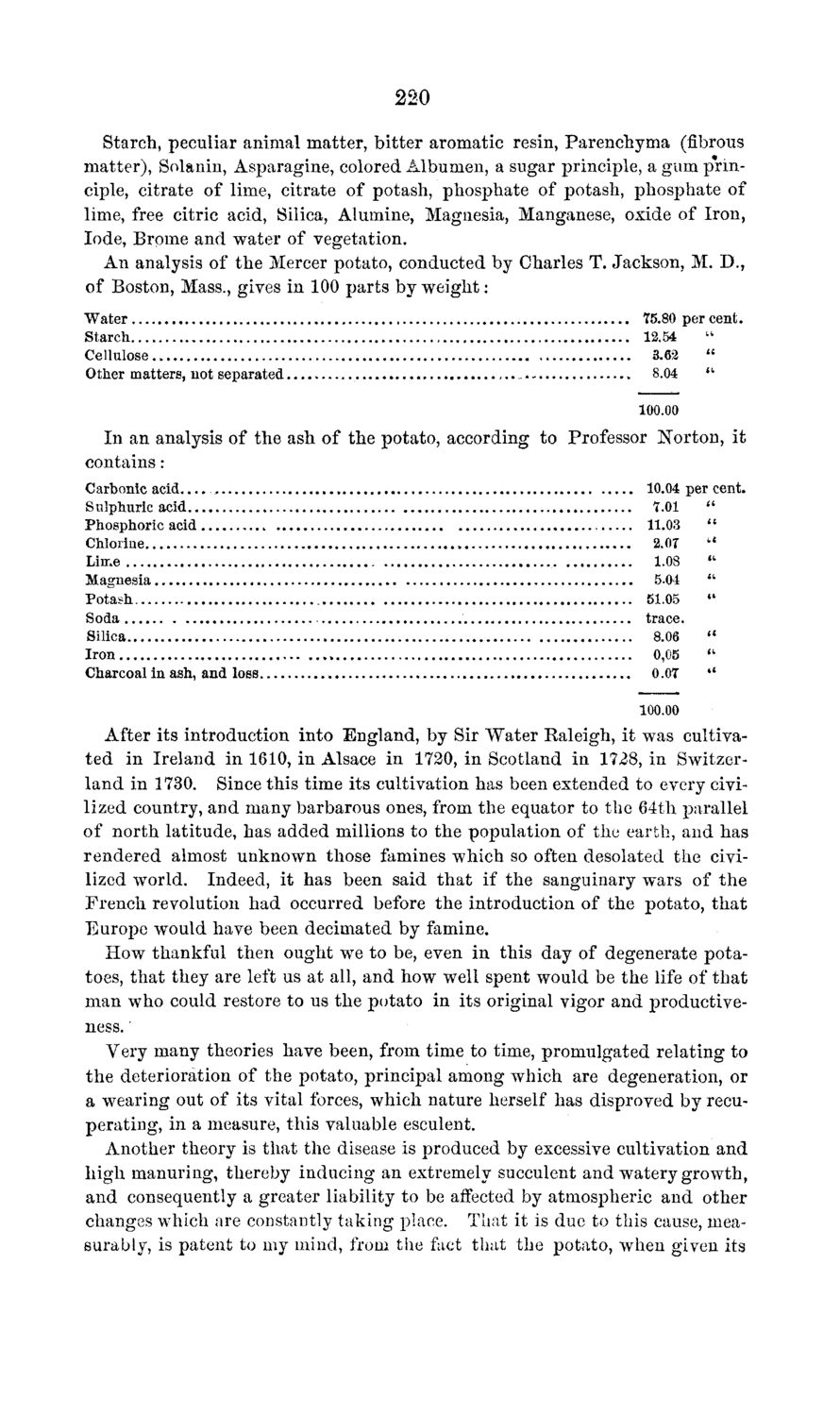| |
| |
Caption: Board of Trustees Minutes - 1869
This is a reduced-resolution page image for fast online browsing.

EXTRACTED TEXT FROM PAGE:
220 Starch, peculiar animal matter, bitter aromatic resin, Parenchyma (fibrous matter), Solanin, Asparagine, colored Albumen, a sugar principle, a gum principle, citrate of lime, citrate of potash, phosphate of potash, phosphate of lime, free citric acid, 8ilica, Alumine, Magnesia, Manganese, oxide of Iron, lode, Brpme and water of vegetation. An analysis of the Mercer potato, conducted by Charles T. Jackson, M. D., of Boston, Mass., gives in 100 parts by w e i g h t : Water Starch Cellulose Other matters, not separated 75.80 per cent. 12.54 3.62 " 8.04 " 100.00 In an analysis of the ash of the potato, according to Professor Norton, it contains: Carbonic acid....... Sulphuric acid Phosphoric acid Chlorine Lime Magnesia Potash Soda Silica Iron Charcoal in ash, and loss 10.04 per cent. T.01 " 11.03 " 2.07 " 1.08 " 5-04 " 51.05 trace. 8.06 " 0,05 " 0.07 •' 100.00 » After its introduction into England, by Sir Water Raleigh, it was cultivated in Ireland in 1610, in Alsace in 1720, in Scotland in 1728, in Switzerland in 1730. Since this time its cultivation has been extended to every civilized country, and many barbarous ones, from the equator to the 64th parallel of north latitude, has added millions to the population of the earth, and has rendered almost unknown those famines which so often desolated the civilized world. Indeed, it has been said t h a t if the sanguinary wars of t h e French revolution had occurred before the introduction of the potato, t h a t Europe would have been decimated by famine. How thankful then ought we to be, even in this day of degenerate potatoes, that they are left us at all, and how well spent would be the life of t h a t man who could restore to us the potato in its original vigor and productiveness. ' Very many theories have been, from time to time, promulgated relating to the deterioration of the potato, principal among which are degeneration, or a wearing out of its vital forces, which nature herself has disproved by recuperating, in a measure, this valuable esculent. Another theory is that the disease is produced by excessive cultivation and h i g h manuring, thereby inducing an extremely succulent and w^atery growth, and consequently a greater liability to be affected by atmospheric and other changes which are constantly taking place. That it is due to this cause, measurably, is patent to my mind, from the fact that the potato, when given its
| |